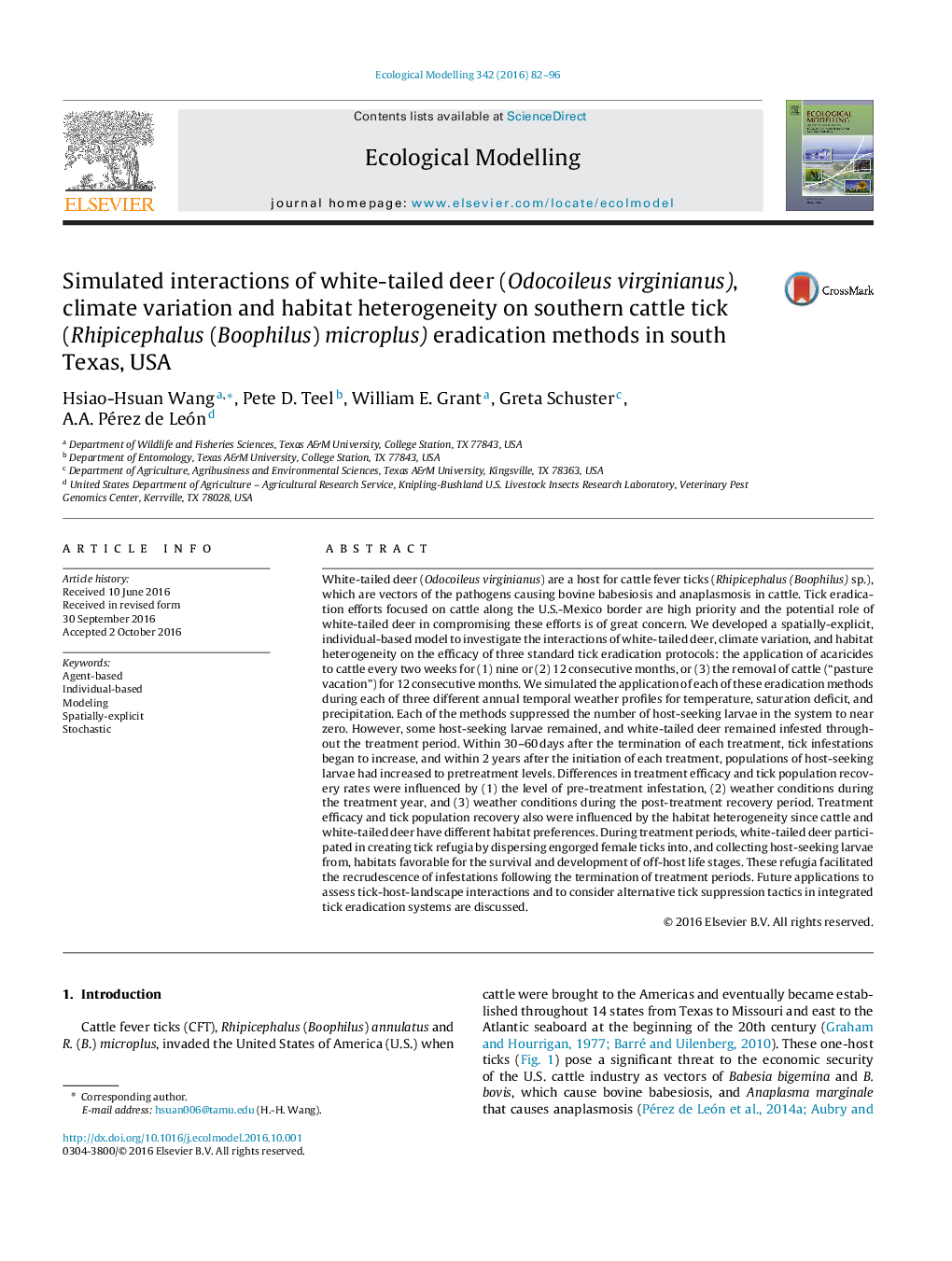| کد مقاله | کد نشریه | سال انتشار | مقاله انگلیسی | نسخه تمام متن |
|---|---|---|---|---|
| 4375495 | 1617405 | 2016 | 15 صفحه PDF | دانلود رایگان |

• Model simulates spatial-temporal tick infestations of southern cattle tick.
• Potential role of white-tailed deer in compromising tick eradication efforts focused on cattle along the U.S.-Mexico border is of great concern.
• Treatment efficacy and tick population recovery rates were influenced by the level of pre-treatment infestation and weather conditions.
• Treatment efficacy and tick population recovery also was influenced by the habitat preferences of cattle and white-tailed deer.
White-tailed deer (Odocoileus virginianus) are a host for cattle fever ticks (Rhipicephalus (Boophilus) sp.), which are vectors of the pathogens causing bovine babesiosis and anaplasmosis in cattle. Tick eradication efforts focused on cattle along the U.S.-Mexico border are high priority and the potential role of white-tailed deer in compromising these efforts is of great concern. We developed a spatially-explicit, individual-based model to investigate the interactions of white-tailed deer, climate variation, and habitat heterogeneity on the efficacy of three standard tick eradication protocols: the application of acaricides to cattle every two weeks for (1) nine or (2) 12 consecutive months, or (3) the removal of cattle (“pasture vacation”) for 12 consecutive months. We simulated the application of each of these eradication methods during each of three different annual temporal weather profiles for temperature, saturation deficit, and precipitation. Each of the methods suppressed the number of host-seeking larvae in the system to near zero. However, some host-seeking larvae remained, and white-tailed deer remained infested throughout the treatment period. Within 30–60 days after the termination of each treatment, tick infestations began to increase, and within 2 years after the initiation of each treatment, populations of host-seeking larvae had increased to pretreatment levels. Differences in treatment efficacy and tick population recovery rates were influenced by (1) the level of pre-treatment infestation, (2) weather conditions during the treatment year, and (3) weather conditions during the post-treatment recovery period. Treatment efficacy and tick population recovery also were influenced by the habitat heterogeneity since cattle and white-tailed deer have different habitat preferences. During treatment periods, white-tailed deer participated in creating tick refugia by dispersing engorged female ticks into, and collecting host-seeking larvae from, habitats favorable for the survival and development of off-host life stages. These refugia facilitated the recrudescence of infestations following the termination of treatment periods. Future applications to assess tick-host-landscape interactions and to consider alternative tick suppression tactics in integrated tick eradication systems are discussed.
Journal: Ecological Modelling - Volume 342, 24 December 2016, Pages 82–96